During the War
The Marine Corps
-
The Marine Corps strongly resisted the inclusion of African Americans at first, but once President Roosevelt signed Executive Order 8802, the Corps began to plan for black recruits. A new training facility was established at Montford Point, part of Camp Lejeune in North Carolina, to maintain segregation. These new Marines were to be trained for anti-aircraft defense battalions as well as supply and logistical roles, freeing up white Marines for combat assignments.
-
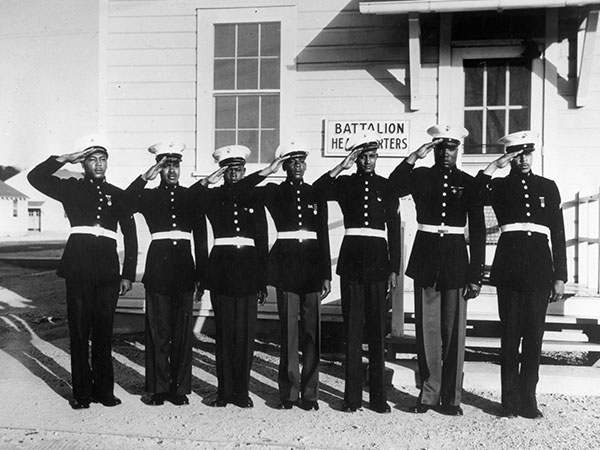 Montford Point Marines pose in their dress blue uniforms, 1943. National Archives, 208-NP-10NN-2.
Montford Point Marines pose in their dress blue uniforms, 1943. National Archives, 208-NP-10NN-2. -
In reality, black Marines found themselves in some of the fiercest fighting of the Pacific War, including Peleliu and Iwo Jima, where many Montford Point Marines risked their lives fighting alongside their white comrades and evacuating wounded men, roles for which they had not been trained. Black Marines in the 51st and 52nd Defense Battalions also saw combat on Guam.
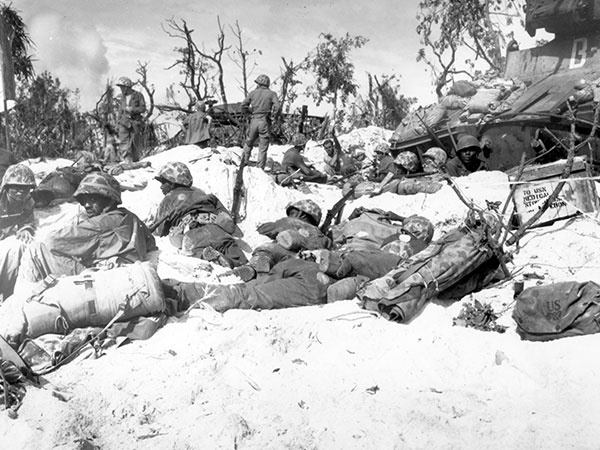 Montford Point Marines serving in an ammunition company take cover under intense fire on the beach at Peleliu, Palau Islands, on September 15, 1944. National Archives, 127-N-9527.
Montford Point Marines serving in an ammunition company take cover under intense fire on the beach at Peleliu, Palau Islands, on September 15, 1944. National Archives, 127-N-9527.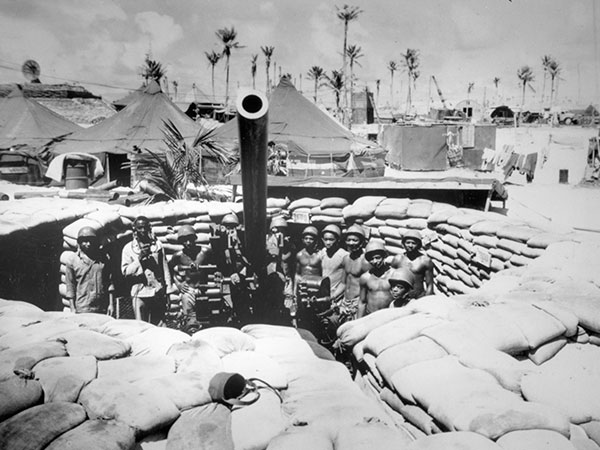 Members of the 51st Defense Battalion man their 90mm anti-aircraft gun, which they named “Lena Horne,” on the Ellice Islands, South Pacific. National Archives, 127-N-12174.
Members of the 51st Defense Battalion man their 90mm anti-aircraft gun, which they named “Lena Horne,” on the Ellice Islands, South Pacific. National Archives, 127-N-12174. -
Edgar Cole discusses finding work as a light-skinned black man before the war, and his service overseas as a Marine. From the Collection of The National WWII Museum.
-
Approximately 17,000 black men enlisted in the Marine Corps by the end of the war. In 1948, President Truman ordered the integration of the Armed Forces with Executive Order 9981. After Montford Point closed in 1949, black and white Marines trained together and served in the same assignments, both in and out of combat.
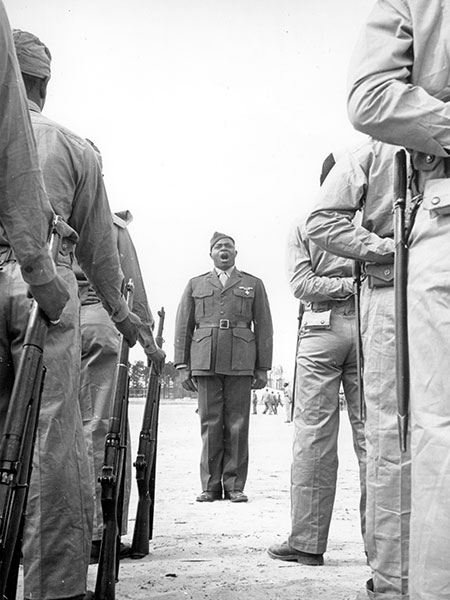 Drill Instructor Gilbert “Hashmark” Johnson trains a platoon of Marine recruits at Montford Point, North Carolina, in April 1943. National Archives, 208-NP-10FF-1.
Drill Instructor Gilbert “Hashmark” Johnson trains a platoon of Marine recruits at Montford Point, North Carolina, in April 1943. National Archives, 208-NP-10FF-1. Drill Instructor Gilbert “Hashmark” Johnson trains a platoon of Marine recruits at Montford Point, North Carolina, in April 1943. National Archives, 208-NP-10FF-1.
Drill Instructor Gilbert “Hashmark” Johnson trains a platoon of Marine recruits at Montford Point, North Carolina, in April 1943. National Archives, 208-NP-10FF-1.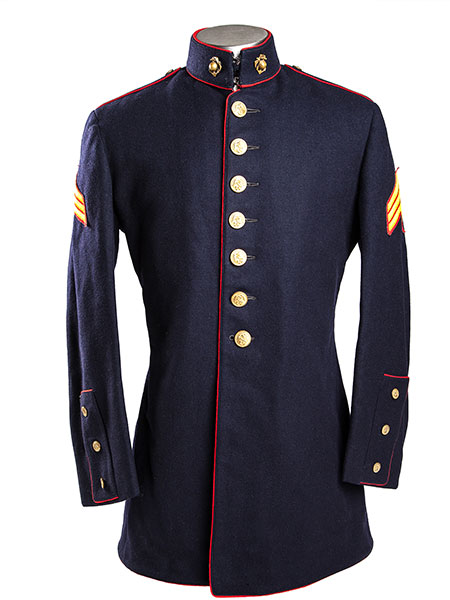 Dress Blue Uniform of Sergeant Leonard Burns
Dress Blue Uniform of Sergeant Leonard Burns
New Orleans native Leonard Burns was the fifth African American to join the Corps, becoming one of the roughly 20,000 “Montford Point Marines” who trained at the segregated North Carolina facility. Burns served in the Pacific at Iwo Jima, and was discharged with the rank of sergeant. Gift of Dr. Leonard Burns, 2001.573 Dress Blue Uniform of Sergeant Leonard Burns
Dress Blue Uniform of Sergeant Leonard Burns
New Orleans native Leonard Burns was the fifth African American to join the Corps, becoming one of the roughly 20,000 “Montford Point Marines” who trained at the segregated North Carolina facility. Burns served in the Pacific at Iwo Jima, and was discharged with the rank of sergeant. From the Collection of The National WWII Museum. Gift of Dr. Leonard Burns, 2001.573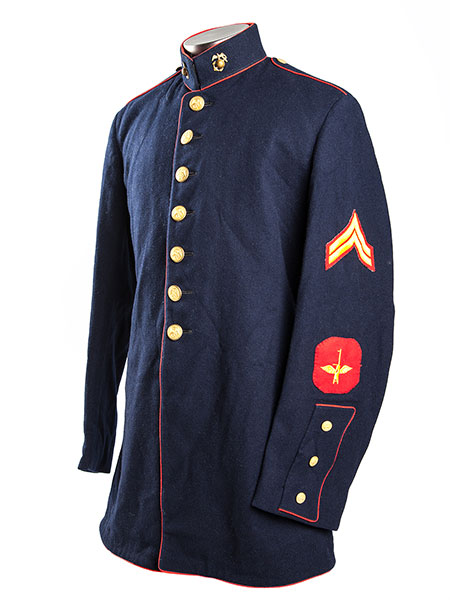 Dress Blue Uniform of Gunnery Sergeant Winston Burns
Dress Blue Uniform of Gunnery Sergeant Winston Burns
Gunnery Sergeant Winston Burns served with the 6th Marine Division, which earned the Presidential Unit Citation for its service on Okinawa and has the distinction of being the only Marine Division to be both organized and disbanded overseas during World War II. Gift of Winston Burns, 2001.520 Dress Blue Uniform of Gunnery Sergeant Winston Burns
Dress Blue Uniform of Gunnery Sergeant Winston Burns
Gunnery Sergeant Winston Burns served with the 6th Marine Division, which earned the Presidential Unit Citation for its service on Okinawa and has the distinction of being the only Marine Division to be both organized and disbanded overseas during World War II. Gift of Winston Burns, 2001.520




